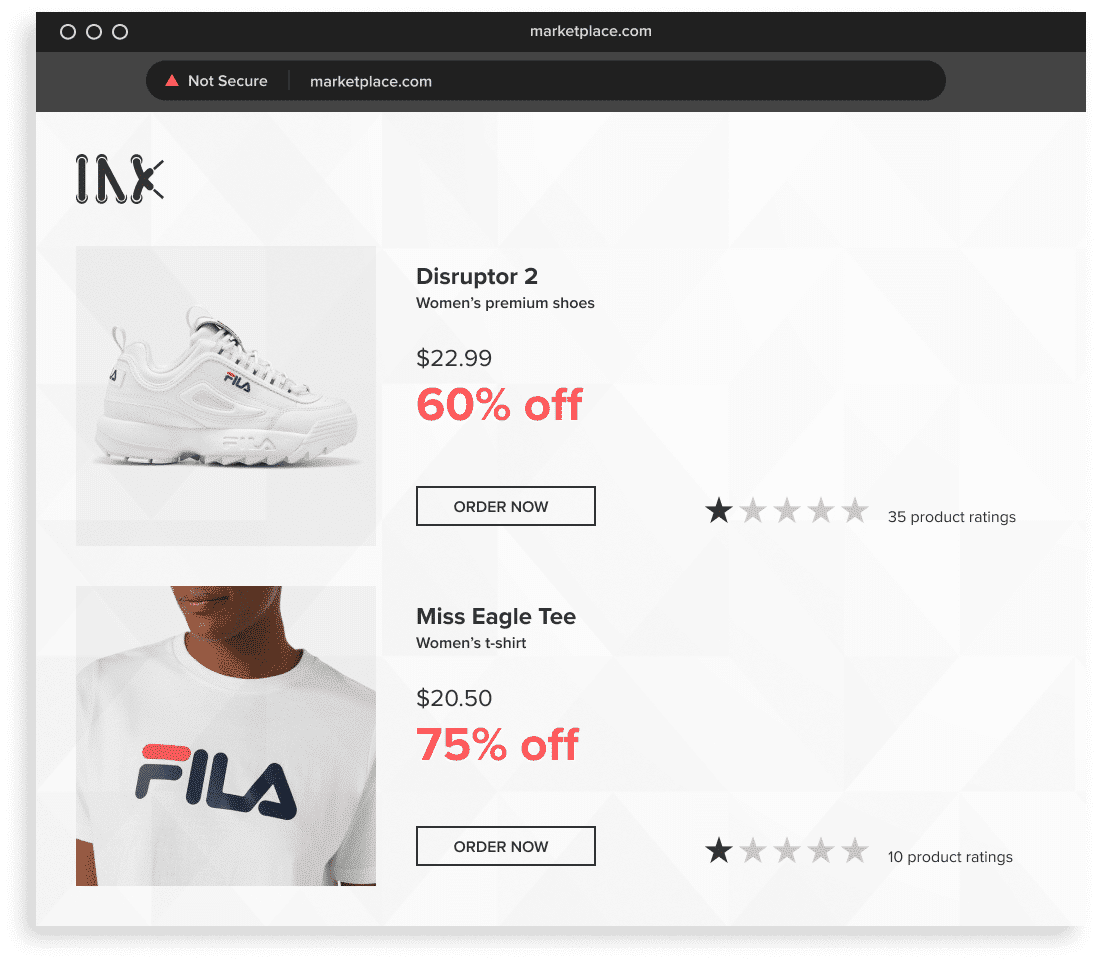Online marketplaces have revolutionized how consumers shop and how brands sell their products. With millions of new listings appearing daily, effective online marketplace monitoring is essential for safeguarding brand reputation, maintaining pricing integrity, and preventing revenue loss. This comprehensive guide delves into the importance of monitoring, the mechanics behind it, and how cutting-edge technology offers a robust solution.
What’s online marketplace monitoring?
Online marketplace monitoring involves the use of advanced technology to track, identify, and address unauthorized or counterfeit product listings across various ecommerce platforms. This proactive approach helps brands mitigate risks, protect their reputation, and optimize their sales channels. Automated monitoring systems can scan vast amounts of data, providing real-time alerts and comprehensive reports on potential infringements. By leveraging machine learning and artificial intelligence, these systems can continuously improve their detection capabilities, adapting to new tactics used by counterfeiters. A key part of it is to integrate human expertise into this process to continually train and refine these technologies, providing essential insights and industry knowledge that ensure the systems remain effective.
How marketplaces handle infringements
It’s important to understand that marketplaces do not want infringements appearing on their sites. It undermines their brand and creates a negative experience for shoppers.
Most online marketplaces, such as Amazon and eBay, have established programs to assist brands in reporting infringements. For example, Amazon’s Brand Registry and eBay’s VeRO programs allow brands to report counterfeit listings directly. These programs aim to maintain a positive shopping experience by removing counterfeit products.
Some marketplaces have developed algorithms to detect suspicious listings proactively. These algorithms analyze various factors such as pricing, seller history, and customer reviews to flag potential counterfeits even before they are reported by brands. An example of this is Alibaba. Its system operates without requiring notification from rights holders and includes technologies such as optical content recognition (OCR) to enhance its scanning capabilities. The marketplace’s continuous refinement of these technologies, including the use of machine learning, allows it to efficiently eliminate problematic listings
However, the challenges are significant. Counterfeiters often omit branded product names and logos from listings to avoid detection. Additionally, social media platforms have become breeding grounds for promoting counterfeit products, further complicating enforcement efforts. The temporary nature of social media posts adds another layer of complexity, allowing counterfeit listings to appear and disappear rapidly before they can be effectively addressed.
Moreover, the use of encrypted messaging apps and private social media groups has made it even harder to track and shut down these operations. These private channels enable counterfeiters to operate with increased secrecy and coordination, shielded from traditional monitoring tools. The anonymity afforded by social media and the lack of uniform enforcement policies across platforms further hinder efforts to identify and prosecute the individuals behind these schemes.
Consumer demand vs counterfeits
Consumer demand plays a crucial role in the prevalence of counterfeits. While most shoppers seek legitimate products, some actively search for cheaper, counterfeit alternatives.
For instance, a study by the International Trademark Association found that 79% of Gen Z individuals purchased counterfeit products within the past year, driven by the desire for affordable yet aesthetically similar items.
This trend is particularly concerning because it indicates a growing acceptance of counterfeit goods among younger consumers. Brands need to educate their audience about the risks and drawbacks of purchasing counterfeit products, including potential safety hazards and the impact on the economy.
Why brands should hire an online marketplace monitoring service
Ignoring the need for marketplace monitoring can lead to severe consequences, including:
- Brand reputation damage: Counterfeit or unauthorized products can tarnish a brand’s image and erode customer trust.
- Revenue loss: Sales of counterfeit products divert revenue from legitimate sales channels.
- Legal issues: Brands may face legal challenges if counterfeit products cause harm or do not meet regulatory standards.
According to new research from Michigan State University, nearly seven in 10 people were deceived into buying counterfeit products online at least once in the past year. Furthermore, the International Chamber of Commerce estimates that counterfeit goods account for 3.3% of global trade, amounting to a staggering $1.77 trillion.
Brands that proactively monitor and address counterfeit issues can not only protect their revenue but also enhance customer loyalty by ensuring that consumers receive authentic, high-quality products.
What to look for in an effective online marketplace monitoring solution
An effective monitoring solution should include:
- Automated scanning: Continuous surveillance across multiple marketplaces to detect new listings.
- Real-time alerts: Immediate notifications of potential infringements for swift action.
- Comprehensive reporting: Detailed insights into detected issues, aiding informed decision-making.
- User-friendly interface: Easy-to-use dashboards and customizable settings tailored to specific brand needs.
Additionally, integration capabilities with other brand protection tools and legal support services can enhance the overall effectiveness of the monitoring solution.
Effective solutions also provide support for multiple regions, allowing brands to monitor global marketplaces comprehensively. Customizable alert thresholds and prioritization features ensure that the most critical issues are addressed first, optimizing resource allocation.
Best practices for online marketplace monitoring
To ensure the efficacy of marketplace monitoring:
- Regularly update monitoring criteria: Adjust parameters to capture evolving infringement tactics.
- Act swiftly on alerts: Prompt responses can prevent further damage and revenue loss.
- Collaborate with marketplaces: Engage with platforms to expedite the removal of infringing listings.
- Track trends: Analyze patterns to stay ahead of new infringement methods.
Implementing these best practices helps brands stay proactive rather than reactive, reducing the impact of counterfeits on their business.
Understanding Red Points’ marketplace solution
Red Points is a leading enforcer of online marketplace infringements, reporting over 2.5 million listings last year. Red Points’ technology is designed to scan global marketplaces daily, using proprietary search algorithms tailored to each marketplace. This technology organizes data into an easily consumable and automatable format, helping to protect brands from reputation risks, revenue loss, and the labor-intensive process of manual infringement detection and enforcement.
How does it work
Red Points employs search algorithms that can detect infringements by identifying listings that use generic terms, image text recognition, and logo detection. This approach ensures that even counterfeiters using sophisticated evasion tactics are detectable. The system’s detection speed and frequency are crucial, especially as counterfeiters may use promoted listings to achieve quick sales.
The platform continuously updates its algorithms to keep pace with new counterfeit strategies, ensuring high detection accuracy and minimizing false positives. It also provides detailed reports that help brands understand the extent and impact of counterfeit activities on their sales and reputation.
Case study: Fashion brand
A mid-sized fashion brand initially underestimated the impact of counterfeit products on Chinese export marketplaces, such as Alibaba. Red Points’ technology identified these listings using generic terms and image analysis, revealing that U.S. sellers were sourcing counterfeits and reselling them domestically. By automating the detection and reporting process, Red Points quickly mitigated the problem by removing over 36,500 infringing listings from the global market, which translates to $36 million worth of counterfeits. The client reported that the online sales volume for authorized distributors increased significantly, highlighting the effectiveness of Red Points’ solution.
This case study underscores the importance of comprehensive monitoring across both domestic and international marketplaces. It also highlights the value of leveraging advanced technology to detect and address counterfeits efficiently.
Combining machine learning and human expertise enables Red Points to offer unparalleled protection against counterfeit threats. Their team of experts works closely with clients to either improve or implement an existing brand protection strategy or develop a new one from the beginning, tailoring their solutions to meet specific needs and ensure optimal results.
What’s next
As digital marketplaces continue to evolve, so does the need for sophisticated solutions to safeguard brands and consumers alike. Our cutting-edge detection capabilities and automated enforcement protect your brand’s reputation and revenue while contributing to a safer online shopping environment.
In addition to monitoring, brands should consider implementing educational campaigns to raise awareness among consumers about the risks of counterfeit products. Collaborating with other industry players to advocate for stronger anti-counterfeiting regulations can also make a significant impact.
Explore how Red Points can protect your brand by signing up for a free demo or consultation to see our technology in action and secure your brand’s presence on online marketplaces.









